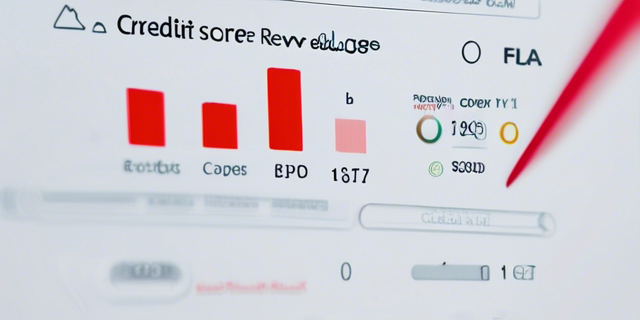Conquering Student Loan Debt 2024: A Strategic Guide to Effective Management

As the cost of higher education continues to soar, an increasing number of students find themselves grappling with the burden of student loan debt. This financial obligation can cast a long shadow over your future, making it essential to develop a comprehensive strategy for managing and eventually eliminating your student loans. In this comprehensive guide, we’ll explore proven tactics and valuable insights to help you navigate the complex world of student loan debt effectively.
Understanding the Gravity of Student Loan Debt

Before we delve into the strategies, let’s take a moment to appreciate the gravity of the situation. Student loan debt in the United States has surpassed a staggering $1.7 trillion, with the average borrower owing around $30,000 upon graduation. This debt can have far-reaching implications, impacting your ability to achieve major life milestones, such as buying a home, starting a family, or even pursuing your desired career path.
However, it’s crucial to remember that student loan debt is not a life sentence. With the right mindset, discipline, and strategic approach, you can conquer this financial challenge and pave the way for a brighter future.
Strategy 1: Know Your Loans Inside and Out
The first step in managing your student loan debt effectively is to develop a comprehensive understanding of your loans. Gather all the necessary information, including:
- Loan types (federal or private)
- Interest rates
- Current balances
- Repayment terms
- Grace periods
Familiarizing yourself with the specifics of each loan will enable you to make informed decisions and develop a tailored repayment plan. Don’t hesitate to reach out to your loan servicers for clarification or additional information.
Strategy 2: Explore Income-Driven Repayment Plans

For those struggling with high monthly payments, income-driven repayment plans can provide much-needed relief. These plans, offered by the federal government, allow you to cap your monthly payments at a percentage of your discretionary income, making it more manageable to stay current on your loans.
Some popular income-driven repayment plans include:
- Income-Based Repayment (IBR)
- Income-Contingent Repayment (ICR)
- Pay As You Earn (PAYE)
- Revised Pay As You Earn (REPAYE)
While these plans can extend your repayment period, they offer the potential for loan forgiveness after a specified period, typically 20-25 years of consistent payments.
Strategy 3: Embrace the Power of Autopay
Automating your student loan payments can be a game-changer in your debt management journey. By setting up automatic payments, you eliminate the risk of missing due dates and incurring late fees or damaging your credit score. Many lenders even offer a small interest rate reduction as an incentive for enrolling in autopay.
However, it’s essential to ensure that you have sufficient funds in your account to cover the automatic payments. Set up reminders or notifications to monitor your balance and avoid potential overdraft fees.
Strategy 4: Prioritize High-Interest Loans
If you have multiple student loans with varying interest rates, it’s generally advisable to prioritize the repayment of the highest-interest loans first. This approach, known as the “debt avalanche” method, can save you a significant amount of money in the long run by minimizing the amount of interest you’ll pay over the life of the loans.
To implement this strategy, follow these steps:
- List all your student loans from highest to lowest interest rate.
- Make minimum payments on all loans except the one with the highest interest rate.
- Allocate any additional funds toward the highest-interest loan.
- Once the highest-interest loan is paid off, roll over the payment amount to the next highest-interest loan.
- Repeat the process until all loans are eliminated.
This method requires discipline and consistency, but the potential savings make it well worth the effort.
Strategy 5: Explore Loan Consolidation and Refinancing

Consolidating your student loans can simplify your repayment process by combining multiple loans into a single payment. This approach can also provide the opportunity to extend your repayment term, potentially lowering your monthly payments.
Alternatively, refinancing your student loans through a private lender can potentially secure a lower interest rate, especially if your credit score and income have improved since you initially took out the loans.
When considering consolidation or refinancing, be sure to weigh the pros and cons carefully. While these options can offer immediate relief, they may also result in the loss of certain borrower protections or loan forgiveness opportunities.
Strategy 6: Leverage Employer Assistance Programs
Many employers recognize the burden of student loan debt and have implemented assistance programs to support their employees. These programs can take various forms, such as:
- Student loan repayment assistance
- Tuition reimbursement
- Loan forgiveness incentives
Be proactive in researching your employer’s offerings and taking advantage of any available benefits. These programs can significantly alleviate the financial strain of student loan debt and accelerate your path to becoming debt-free.
Strategy 7: Explore Student Loan Forgiveness Programs
Depending on your career path and employment situation, you may be eligible for various student loan forgiveness programs. These programs can provide partial or complete forgiveness of your remaining loan balances after meeting specific service or employment requirements.
Some popular student loan forgiveness programs include:
- Public Service Loan Forgiveness (PSLF)
- Teacher Loan Forgiveness
- Income-Driven Repayment (IDR) Forgiveness
- Military College Loan Repayment Program (CLRP)
Carefully research the eligibility criteria and follow the application processes to take advantage of these potentially life-changing opportunities.
Strategy 8: Increase Your Income Streams
While cutting expenses is a crucial aspect of debt management, increasing your income can also significantly accelerate your repayment progress. Consider exploring side hustles, freelance work, or even starting a small business to generate additional income streams.
Allocate a portion of your extra earnings specifically toward your student loan payments, treating it as a priority expense. This proactive approach can help you chip away at your debt more quickly and potentially shave years off your repayment timeline.
Strategy 9: Seek Support and Accountability
Managing student loan debt can be an emotionally and mentally challenging journey. Don’t hesitate to seek support from trusted friends, family members, or professional counselors who can provide encouragement and accountability.
Consider joining online communities or support groups where you can connect with others facing similar struggles. Sharing experiences and strategies can not only provide emotional support but also valuable insights and practical tips for navigating the complexities of student loan debt.
Strategy 10: Stay Motivated and Celebrate Milestones
Paying off student loan debt is a marathon, not a sprint. It’s essential to stay motivated throughout the process and celebrate milestones along the way. Whether it’s paying off a particular loan, reaching a specific debt reduction milestone, or achieving a significant credit score improvement, take the time to acknowledge your progress and reward yourself (within reason, of course).
Visualize your debt-free future and remind yourself of the long-term benefits of your efforts, such as increased financial freedom, improved credit scores, and the ability to pursue other life goals without the burden of student loan debt weighing you down.
Conclusion
Managing student loan debt is a formidable challenge, but with the right strategies and unwavering determination, it is a battle that can be won. By implementing the tactics outlined in this guide, you’ll be well-equipped to take control of your financial situation and make steady progress toward a debt-free future.
Remember, the journey may be long and arduous, but the rewards of financial freedom and the sense of accomplishment that comes with conquering your student loan debt are well worth the effort. Stay focused, stay motivated, and embrace the power of strategic debt management to pave the way for a brighter, more financially secure tomorrow.
FAQs: Conquering Student Loan Debt 2024
1. Can I pause my student loan payments temporarily?
Yes, there are options to temporarily pause or reduce your student loan payments, such as deferment or forbearance. However, these options should be used judiciously, as interest may continue to accrue during the pause period, potentially increasing your overall debt.
2. How does student loan debt affect my credit score?
Student loan debt can have a significant impact on your credit score, both positively and negatively. Making consistent, on-time payments can help improve your credit score over time, while missed payments or defaulting on your loans can severely damage your credit.
3. Can I negotiate a lower interest rate on my student loans?
It is generally difficult to negotiate lower interest rates on federal student loans. However, if you have private student loans, you may be able to negotiate a lower rate with your lender, especially if your credit score and income have improved significantly since taking out the loans.
4. What happens if I default on my student loans?
Defaulting on your student loans can have severe consequences, including wage garnishment, tax refund interception, and damage to your credit score. It can also make you ineligible for additional federal student aid and loan forgiveness programs. If you’re struggling to make payments, explore alternative repayment options before defaulting.
5. How long does it typically take to pay off student loan debt?
The timeline for paying off student loan debt varies greatly depending on factors such as the total amount owed, interest rates, repayment plan, and your income. On average, it can take anywhere from 10 to 30 years to pay off student loan debt, with some borrowers taking even longer.









